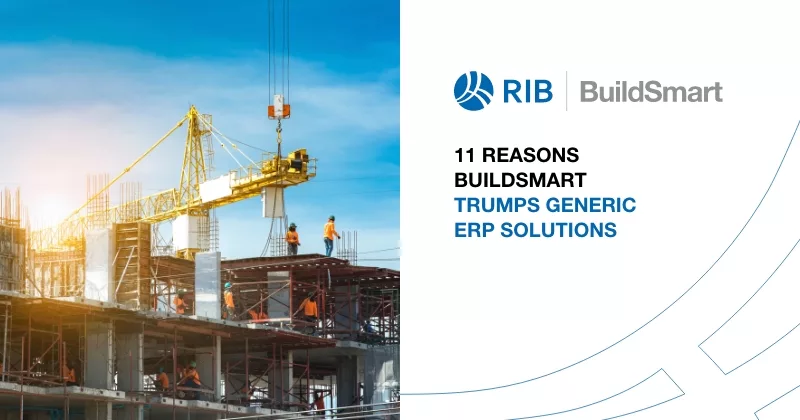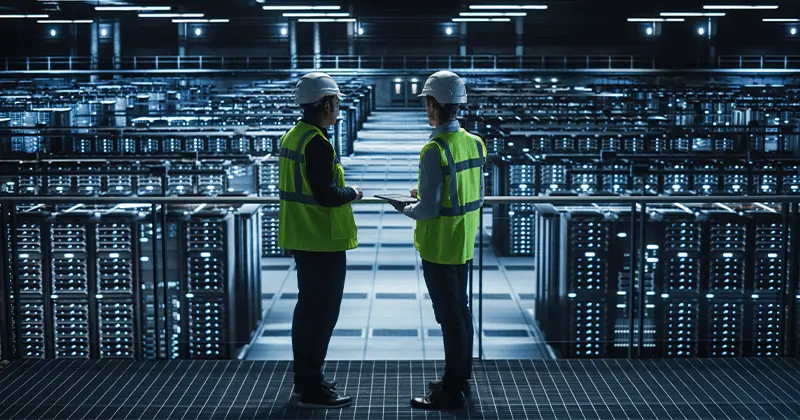22 mins read
5 Elements A Construction ERP Must Have And Why?

ERP systems are now widely used across most industries and deliver outstanding efficiencies in process and synchronisation. It is however relevant to highlight a glaring difference, between the transactional systems used across the majority of industries, and the far more complex and advanced systems required for use in the Construction Industry. Construction ERP needs to perform the functions of a standard ERP with the addition of cost projections and over-runs as well as managing the entire project life-cycle from bid to hand-over (including all elements in between that will likely span multiple accounting periods).
With that in mind, here are 5 elements your Construction ERP system absolutely must have:
Estimation Integration
Every project that is handed over will be either on time, or not. It will also have been completed on budget, or not. The end user will not be concerned by whether you made a profit, he will be concerned with whether it was delivered as promised (build quality and time). There will usually be penalties imposed for any over-run that will impact your pocket and margin. Accurate estimations can now be created on systems such as Candy, a state-of-the-art estimation software platform, that was designed and developed exclusively for the construction contractor. This system links seamlessly with BuildSmart, another world leading product from CCS, that can assess progress along the life-cycle of the project against the estimation. This allows the system to highlight any over-run in cost and time with a deep drilldown facility to identify where, when and why this is happening which enables the user to take immediate actions to rectify.
Advanced Accounting
As in any business, certain elements of accounting and book-keeping will be standard. With a construction ERP though, additional elements will be required in order to manage the financial aspects of the entire process across multiple projects.
Examples of additional functionality will include:
- Subcontract management
- Debtor and Subcontractor tracking of Advances and Retentions
- Plant and Equipment management
- Operational inventory management
- Cost Reporting (accurately compare actual costs to anticipated project costs in real-time)
Additional Pay Role Functions
The calculation of costs in the Estimation phase will have drilled down into time vs activity. In order to have up to the second accurate information on cost against budget, the pay role and accounting divisions need to be able to track and report on time and progress against estimated costs. The additional elements that will be required to provide this level of granular analysis will include:
- Real-time payroll processing
- Summary labor cost analysis
- Unit cost reports
- Unit productivity reports
- Direct labor cost control
- Multi-project capability
- On-demand project cost/revenue consolidations
Plant, Equipment & Materials
Construction ERP must be able to handle management of all plant, materials and equipment across multiple projects. In a very competitive environment with tighter and tighter margins, it is common for resources of all kinds to be shared across projects and locations to get the maximum efficiency. Your construction ERP is likely to need to manage and account for a huge variety of construction materials as well as equipment and manpower.
Exhaustive financial reporting
As mentioned earlier, reporting in Construction ERP needs to be up to the minute, real time data, driven to be effective in managing margins. In the construction world, profit and loss are not so easily calculated compared with traditional business models and the ERP systems that deliver for Construction will need to be project focused and consider additional elements such as:
- Resource utilization analysis
- Multiple location reporting and analysis
- Profit & Loss management by unit, location, product mix and/or project manager
- Detailed asset tracking
- Liability and equity management by project, business unit or function
- Balance sheet management by project, business unit or function
- Multiple company consolidated reports and multi-currency translations
This article barely scratches the surface in highlighting absolute ‘must have’ functions for a construction ERP. To truly understand the power and capability, contact CCS who can provide detailed information specifically for your business and how Candy and BuildSmart will deliver for you.
Most Recent
22 mins read
15 mins read
49 mins read
24 mins read

E-BOOK











